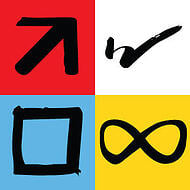 The most recent issue of Training and Development Magazine (T+D, July, 2104) noted new research findings that 78% of managers surveyed indicated that personality is the most important attribute in a job candidate. This study is a part of a larger conversation that personality is increasingly more important than hard skills as one moves up in the organizational ranks. In addition to typically sought after characteristics such as conscientiousness and analytic skills, the study found that the most desirable traits were creativity, drive and flexibility. In other words, in today’s business landscape, in order to be successful as we assume leadership roles, we must ensure we take a whole leader approach.
The most recent issue of Training and Development Magazine (T+D, July, 2104) noted new research findings that 78% of managers surveyed indicated that personality is the most important attribute in a job candidate. This study is a part of a larger conversation that personality is increasingly more important than hard skills as one moves up in the organizational ranks. In addition to typically sought after characteristics such as conscientiousness and analytic skills, the study found that the most desirable traits were creativity, drive and flexibility. In other words, in today’s business landscape, in order to be successful as we assume leadership roles, we must ensure we take a whole leader approach.
A whole leader is someone who has developed the ability to be agile in ALL these areas, rather than only be effective in one or two. In my own work with leaders it became clear early on that although technical skills are certainly necessary at the beginning of ones carrier, and that they can do well with only one of these characteristics noted above, this will not take them to the next level of leadership. As leaders, it is no longer ok to only be analytic, as we also need to be creative and have the courage to make tough decisions. It is no longer ok to be only laser focused on one thing, as we must also see the big picture and navigate competing priorities. Whole leaders know how to use their strengths AND know when something else is needed. Recognizing that AND often means a paradox. Whole leaders know how to strike the right balance between leveraging strengths while not becoming a victim of them.
In addition to my work with leaders, I teach talent development practitioners how to develop their clients to be whole leaders by use of an instrument called FEBI. The FEBI is a personality assessment specifically designed for leadership development that measures precisely the personality characteristics the study above noted as what hiring managers are now looking for when evaluating if a candidate will be successful in their work. Since we know from personality theory that we have a tendency to prefer one or two of these characteristics, or energy patterns of personality as FEBI terms them, talent development practitioners can help leaders:
- Be self-aware to understand their own preferences and how it impacts how they interpret and interact with their environment.
- Align their work with what they are natural great at, growing and embracing their strength.
- Become agile in all patterns but developing their whole self so that they can summon a different energy pattern when their strength isn’t appropriate for a particular leadership task.
The way we bring about this self-awareness is through validated psychometrics such as FEBI. The four patterns FEBI measures have been found to be essential for leadership success:
- Driver – laser focused, drives for results, challenges barriers, stretches for goals, loves to win, gets to the point, fast and direct, and independent.
- Organizer - does the right thing, moves step by step, proper, likes order, plans and lists, neat and tidy, stable and reliable.
- Collaborator - engages people, has fun, rolls with the punches, sees both sides, works around obstacles, plays in the give and take, builds teams and networks.
- Visionary - goes with the flow, lets go, thinks in leaps, sees the big picture, seeks harmony, thinks strategically, future-oriented.
Our research has found that although we tend to favor one or two of these patterns, which we call Home Patterns, the most successful leaders are those that can easily access all four and are able to use the right pattern at the right time. These whole leaders are able to thrive with their strengths, while not getting stuck in them. They are able to recognize what the situation demands, what pattern is best aligned with that demand and effectively enter into that pattern to approach the situation with the right energy. Whole leaders know their strengths but have also developed a full tool box so that when their home pattern isn’t best, they can flip into what pattern is.
Want to learn more about how FEBI can be used in your own talent development efforts? Join us on September 7th for the free webinar, Energize Yourself, Energize Your Business with FEBI



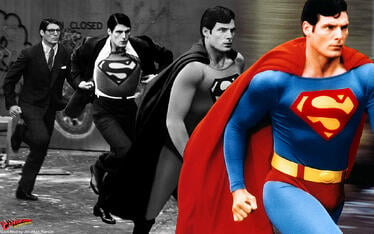 Change - happening faster all the time - still calls out for management and all the planning, delegating, budgeting and deciding that implies. But transition requires leadership. Change is what happens to organizational process, transition is what happens to the people involved in that process.
Change - happening faster all the time - still calls out for management and all the planning, delegating, budgeting and deciding that implies. But transition requires leadership. Change is what happens to organizational process, transition is what happens to the people involved in that process.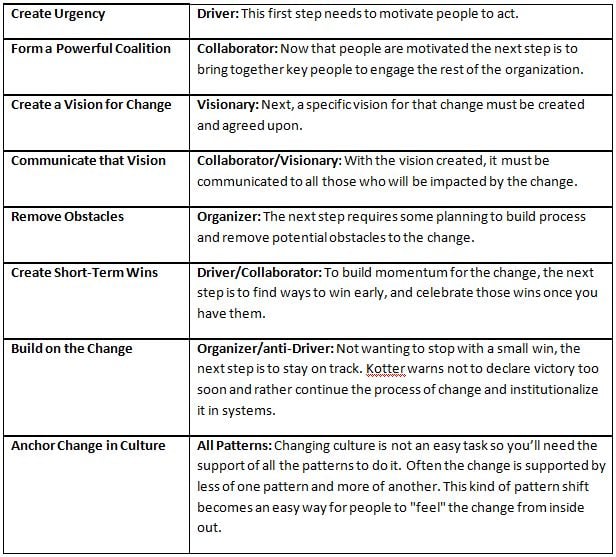


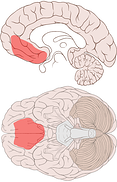 e relevant parts of the brain (the VMPFC, ACC, and OFC, for you neuroscience nerds out there) find themselves unable to make good decisions, and sometimes, any decisions at all.
e relevant parts of the brain (the VMPFC, ACC, and OFC, for you neuroscience nerds out there) find themselves unable to make good decisions, and sometimes, any decisions at all.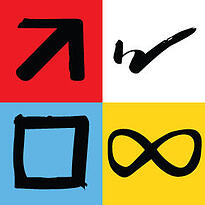


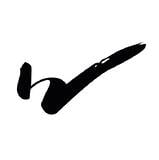
 ext time you’re faced with chaos, try this exercise to approach it with all the possibility of the Visionary. To get the most out of this activity, I strongly encourage first entering Visionary physically, such as is shown in the Visionary Pattern Energy you can download below. With blank paper and a pen, find a quiet open space. A park bench, a meadow or by a body of water is a great space for this activity. Become aware of your breathing, let your body relax, and let your eyes soften to take in full peripheral vision – seeing the entire scene around you all at once. Now, in the middle of the paper draw a circle and write the phrase “what is possible now?” Over the next 20 minutes, write down any thought that pops in your head. You don’t have to think too hard about it, nor do the thoughts need to make sense now. Just keep feeling the flow of your breath, feeling into the bigness of the Visionary, and let thoughts of all that is possible arise on their own. After writing down a thought, rather than focusing on it, just let it go and await the next thought. With this random smattering of possibilities in front of you, turn your page over and again draw a circle except this time write the phrase “what wants to happen here?” Again, take 20 minutes powered by the Visionary and, with this question, write down whatever thoughts decide to pop in your head. By the end of this activity, take a look at your paper and see what you came up with. Check in on the feeling this framing brings whatever issue you were facing. Empowered by the Visionary, it will be hard to find anything you can’t handle.
ext time you’re faced with chaos, try this exercise to approach it with all the possibility of the Visionary. To get the most out of this activity, I strongly encourage first entering Visionary physically, such as is shown in the Visionary Pattern Energy you can download below. With blank paper and a pen, find a quiet open space. A park bench, a meadow or by a body of water is a great space for this activity. Become aware of your breathing, let your body relax, and let your eyes soften to take in full peripheral vision – seeing the entire scene around you all at once. Now, in the middle of the paper draw a circle and write the phrase “what is possible now?” Over the next 20 minutes, write down any thought that pops in your head. You don’t have to think too hard about it, nor do the thoughts need to make sense now. Just keep feeling the flow of your breath, feeling into the bigness of the Visionary, and let thoughts of all that is possible arise on their own. After writing down a thought, rather than focusing on it, just let it go and await the next thought. With this random smattering of possibilities in front of you, turn your page over and again draw a circle except this time write the phrase “what wants to happen here?” Again, take 20 minutes powered by the Visionary and, with this question, write down whatever thoughts decide to pop in your head. By the end of this activity, take a look at your paper and see what you came up with. Check in on the feeling this framing brings whatever issue you were facing. Empowered by the Visionary, it will be hard to find anything you can’t handle.

 imaginations. You would be mistaken. I am actually describing a typical Saturday morning for my wife, Jennifer. No, Jennifer is not from a magical land, nor a figment of my own imagination. Come Saturday morning, Jennifer is a gamer. Her games of choice are always of the creative, whimsical and playful variety. I already know what some of you are thinking: What a waste of time. Isn’t Nintendo for children? I would postulate that not only should we play and have fun, but that time spent doing so is of tremendous benefit to us. The more childlike and whimsical the better!
imaginations. You would be mistaken. I am actually describing a typical Saturday morning for my wife, Jennifer. No, Jennifer is not from a magical land, nor a figment of my own imagination. Come Saturday morning, Jennifer is a gamer. Her games of choice are always of the creative, whimsical and playful variety. I already know what some of you are thinking: What a waste of time. Isn’t Nintendo for children? I would postulate that not only should we play and have fun, but that time spent doing so is of tremendous benefit to us. The more childlike and whimsical the better!  Play is not only great for recharging your batteries outside of work, you can also engage this pattern at work, which makes work a lot more fun. The Collaborator pattern loves to have fun, to engage others, play in the give and take of relationships, and see both sides of a situation. Imagine how powerful this pattern could be if you need to engage your employees while navigating an organizational change, or to problem solve a complex issue. The Collaborator is often left out of the very situations where it is most needed. In such situations, especially if you normally approach them with the Driver’s urgency or the Organizer’s seriousness, you may need to be more intentional about summoning the Collaborator. But with a bit of practice, it will be easier and easier to do so.
Play is not only great for recharging your batteries outside of work, you can also engage this pattern at work, which makes work a lot more fun. The Collaborator pattern loves to have fun, to engage others, play in the give and take of relationships, and see both sides of a situation. Imagine how powerful this pattern could be if you need to engage your employees while navigating an organizational change, or to problem solve a complex issue. The Collaborator is often left out of the very situations where it is most needed. In such situations, especially if you normally approach them with the Driver’s urgency or the Organizer’s seriousness, you may need to be more intentional about summoning the Collaborator. But with a bit of practice, it will be easier and easier to do so.

 Here is how to get started. Take one of your brilliant ideas and write it down on a blank sheet of paper. Now, envision what it will be like for this idea to turn into reality. How is the world different? How is your idea/product being used? Really put yourself in that future of your idea. Now, summon your inner Organizer. Sit up straight, clean your workspace and put on some classical music. On your paper, write down several key things that would have to happen to make your idea a reality. Next, pick one of these things that you feel you can make headway on now, and write out a step-by-step list: how can you bring that about? Now, transfer this list to a calendar and hold yourself accountable to following through on these steps. It’s important to make these deadlines real for yourself, so if you are having a hard time following through, try telling a friend - sort of like an accountability buddyJ The Chinese philosopher Lao-tzu famously said, “A journey of a thousand miles begins with a single step.” With a little help from the Organizer, take that step today!
Here is how to get started. Take one of your brilliant ideas and write it down on a blank sheet of paper. Now, envision what it will be like for this idea to turn into reality. How is the world different? How is your idea/product being used? Really put yourself in that future of your idea. Now, summon your inner Organizer. Sit up straight, clean your workspace and put on some classical music. On your paper, write down several key things that would have to happen to make your idea a reality. Next, pick one of these things that you feel you can make headway on now, and write out a step-by-step list: how can you bring that about? Now, transfer this list to a calendar and hold yourself accountable to following through on these steps. It’s important to make these deadlines real for yourself, so if you are having a hard time following through, try telling a friend - sort of like an accountability buddyJ The Chinese philosopher Lao-tzu famously said, “A journey of a thousand miles begins with a single step.” With a little help from the Organizer, take that step today!


 Tell me about Stonewater Leadership.
Tell me about Stonewater Leadership.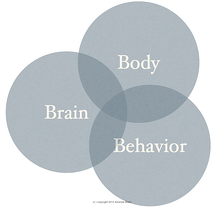 logical systems run right through your pelvic bowl. Your everyday posture actually plays a role in your resilience to stress.
logical systems run right through your pelvic bowl. Your everyday posture actually plays a role in your resilience to stress.

